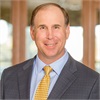One of the most common goals for a 401(k) plan is to provide a savings vehicle for the company’s owner and their employees. However, one problem—the IRS caps the amount of annual contributions participants can make. For employers, highly compensated employees and near-retirees looking to ramp up retirement savings, plan limits can create roadblocks. But, there are other options.
Enter the New Comparability Plan. They are profit-sharing plans designed so owners, highly-compensated employees and older workers can receive higher contribution amounts while minimizing allocations to the accounts of younger, lower-paid employees.[1]
Here’s how they work (see Table 1).
- Employees are divided into two or more groups based on age, length of service and/or compensation
- Each group in the plan receives a different level of contributions
- The separate groups are spelled out in the plan document while the contribution percentage can be determined each year[2]
- Contributions are based on the benefit of those contributions at retirement
Table 1 | Sample Comparison
| Non-elective Safe Harbor | Traditional Profit Sharing | Age-Weighted Profit Sharing | New Comparability | |||||||
| Salary | Title | Age | % of Pay | Contribution Allocated | % of Pay | Contribution Allocated | % of Pay | Contribution Allocated | % of Pay | Contribution Allocated |
Alex | $150,000 | Owner | 50 | 3% | $4,500 | 10% | $15,000 | 18% | $27,000 | 25.6% | $38,500 |
Charlie | $150,000 | Owner | 50 | 3% | $4,500 | 10% | $15,000 | 18% | $27,000 | 25.6% | $38,500 |
Sadie | $70,000 | Director | 50 | 3% | $2,100 | 10% | $7,000 | 15% | $10,500 | 10% | $7,000 |
Murphy | $40,000 | Manager | 30 | 3% | $1,200 | 10% | $4,000 | 8% | $5,000 | 5% | $2,000 |
Lola | $30,000 | Manager | 22 | 3% | $900
| 10% | $3,000 | 6% | $1,800 | 5% | $1,500 |
Employer Total |
|
|
|
| $13,200 |
| $44,000 |
| $71,300 |
| $87,500 |
*Illustrative purposes only. Consult your TPA for specifics.
New Comparability Plans solve the issue of age-weighted plans where a 50-year-old owner can receive the same allocation as a 50-year-old worker. However, by dividing the company into different groups of workers, this plan type allows the 50-year-old owner to get a greater allocation than the 50-year-old worker.
What types of companies can benefit from a New Comparability Plan?
Commonly used by small companies (generally fewer than 50 employees), plan decision makers could add New Comparability Plan design to an existing 401(k) plan and dramatically increase employer contributions to their owner(s). The plans work in many environments, but especially when there is a wide disparity in compensation and age between the owner and their key employees and the rest of the workforce.
New Comparability Plans can benefit a company if the owner:
- Wants to maximize employer contributions to themself and their executive team
- Is generally older than the rest of their employees
- Has a higher salary than most of their employees
- Wants to reward older employees
Table 1 illustrates how a New Comparability Plan gives this company’s owners Alex and Charlie 25.6% of their salary which equates to $38,500 or 88% of the total employer contribution of $87,500.
Drawbacks
Critics say that New Comparability Plans are unfair since they benefit older, higher-compensated employees at the expense of younger, lower-paid employees. So the plans must pass strict non-discrimination testing—a special IRS general test.
The plan must pass nondiscrimination tests each year to show they don’t discriminate in favor of the highly compensated employees, which, of course, includes the owner.
New Comparability Plans satisfy the test by requiring minimum contributions and then having the plan pass a series of tests to show that the projected benefits for each employee group meet the coverage requirements.[3] The test can be complicated and difficult to pass, so it’s important to design the plan properly so it can pass.
Are they for you?
A New Comparability Plan can help you as the owner of a small business to direct the bulk of your company’s contributions back to you, with certain restrictions imposed by the non-discrimination test.
It can be an attractive option depending on your company’s demographics and compensation structure. Be mindful of start-up fees and increased annual administrative fees. Check with your TPA to ensure they’re able to handle the plan’s complexities. Even so, a New Comparability Plan can provide you a lot of flexibility in designing your retirement and compensation package.
They’re not for everybody but are certainly worth looking into.
Adcock Financial Group
Brian Adcock
311 W. Fletcher Avenue
Tampa, FL 33612
813-935-4091
Securities offered through Kestra Investment Services, LLC (Kestra IS), member FINRA/SIPC. Investment advisory services offered through Kestra Advisory Services, LLC (Kestra AS), an affiliate of Kestra IS. Adcock Financial Group is a member firm of PartnersFinancial. Kestra IS and Kestra AS are not affiliated with Adcock Financial Group or PartnersFinancial. Kestra IS and Kestra AS do not provide tax or legal advice. Please access the following site to review form CRS, Reg BI and relevant disclosures. https://www. kestrafinancial.com/disclosures
This information was developed as a general guide to educate plan sponsors and is not intended as authoritative guidance or tax/legal advice. Each plan has unique requirements and you should consult your attorney or tax advisor for guidance on your specific situation.
©401k Marketing, LLC. All rights reserved. Proprietary and confidential. Do not copy or distribute outside original intent.
[1] Mary Chlodo and Jason Linder, “What is a New Comparability Plan?” July 23, 2019. 1. RSM US. https://rsmus.com/what-we-do/services/wealth-management/services-we-offer/retirement-plan-advisory/what-is-a-new-comparability-plan.html.
[2] Maureen Hamblin. “Cross Tested Plans.” 3. Pentegra. https://www.pentegra.com/current-thinking/cross-tested-plans/cross-tested-plans.
[3] William M. DiChristofaro. 2.



